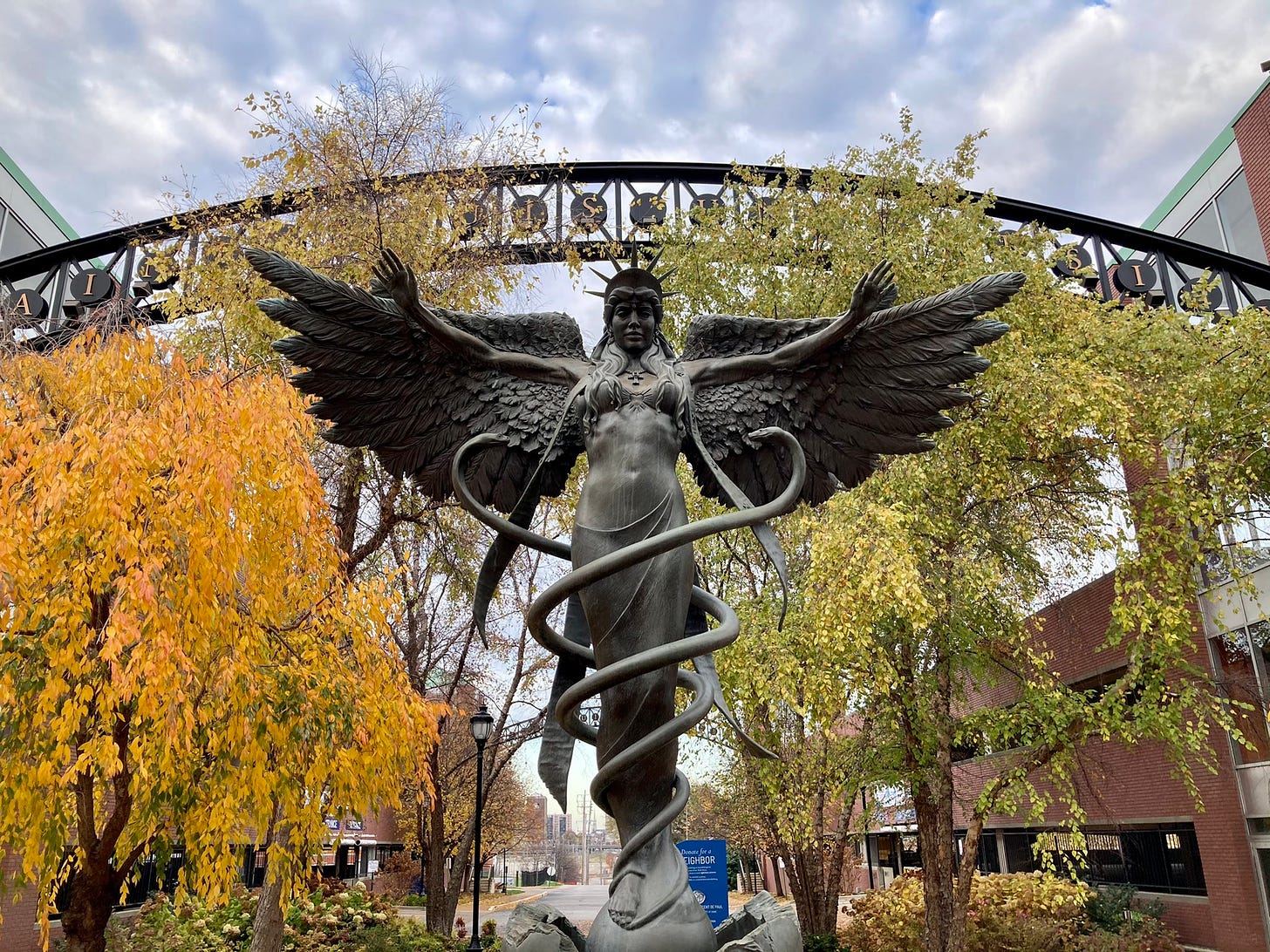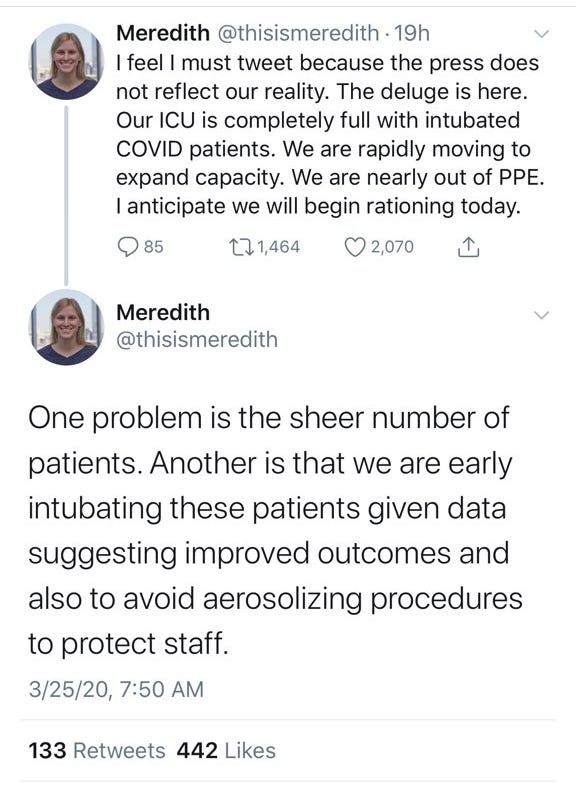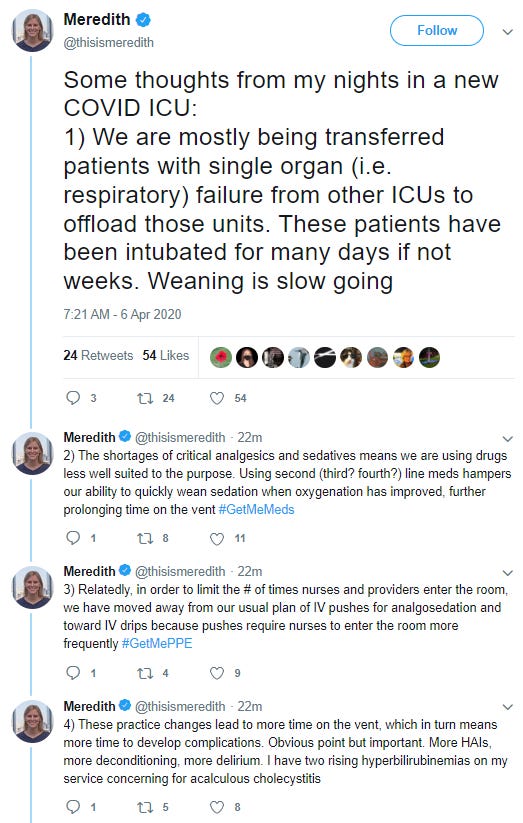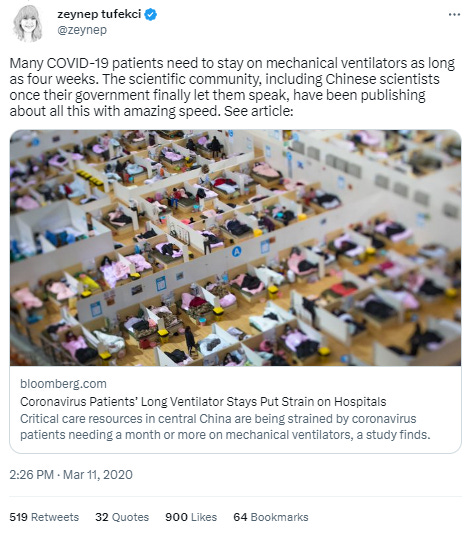The Great COVID Ventilator Death Cover-up
Tens of thousands of Americans died after being placed on mechanical ventilators in spring 2020. It’s long past time we got real answers as to how many were killed this way.
by Michael Senger via The New Normal
It’s long been something of a mystery why there have been no major studies on how many COVID patients were killed by mechanical ventilators in spring 2020. Early data from China had suggested that ventilators would need to be used widely in the treatment of COVID patients, and this led to a major rush to procure ventilators on the part of politicians and hospital systems all over the world.
A small sample of the hundreds of headlines from that period features ones such as: “Cuomo refutes Trump, insists NY needs up to 40,000 ventilators,” “NY may need 24,000 more ventilators to fight COVID-19. Here’s how it could get them,” “Which coronavirus patients will get life-saving ventilators? Guidelines show how hospitals in NYC, US will decide,” “Amid Ongoing COVID-19 Pandemic, Governor Cuomo Announces 1,000 Ventilators Donated to New York State,” “A New York hospital is treating two patients on a device intended for one.”
However, it soon became clear that ventilators were being vastly overused, and the medical community gradually ceased this practice of mass intubation. Dr. Cameron Kyle-Sidell acted as an early whistleblower, sounding the alarm in a widely-shared video:
We are operating under a medical paradigm that is untrue… I fear that this misguided treatment will lead to a tremendous amount of harm to a great number of people in a very short time… This method being widely adopted at this very moment at every hospital in the country…is actually doing more harm than good.
In interviews with major media outlets, several practitioners later disclosed that patients had often been put on ventilators not for their own benefit, but in order to stop the virus from spreading. As one doctor later told the Wall Street Journal:
We were intubating sick patients very early. Not for the patients’ benefit, but in order to control the epidemic and to save other patients. That felt awful.
As another doctor told Time Magazine:
He says some doctors are intubating early because they fear that less-intensive forms of ventilation, like high-flow nasal oxygen, can aerosolize a virus, putting health care workers at risk of getting sick. ‘This is more theoretical fear than a real fear,’ Hill says, since there’s not strong evidence that COVID-19 spreads this way.
As Dr. Rich McCormick told the House COVID Select Subcommittee:
The healthcare professionals…got it wrong. We were going off of old technologies, old assumptions. And I remember we were intubating people that probably shouldn’t have been intubated.
As Meredith Case, an internal medicine resident at NewYork-Presbyterian Medical Center, put it in a series of since-deleted threads, hospitals were “early intubating” patients for “many days if not weeks” in part “to avoid aerosolizing procedures to protect staff,” and several “practice changes lead to more time on the vent.”
One problem is the sheer number of patients. Another is that we are early intubating these patients given data suggesting improved outcomes and also to avoid aerosolizing procedures to protect staff.
1) We are mostly being transferred patients with single organ (i.e. respiratory) failure from other ICUs to offload those units. These patients have been intubated for many days if not weeks. Weaning is slow going
2) The shortages of critical analgesics and sedatives means we are using drugs less well suited to the purpose. Using second (third? fourth?) line meds hampers our ability to quickly wean sedation when oxygenation has improved, further prolonging time on the vent
3) Relatedly, in order to limit the # of times nurses and providers enter the room, we have moved away from our usual plan of IV pushes for analgosedation and toward IV drips because pushes require nurses to enter the room more frequently
4) These practice changes lead to more time on the vent, which in turn means more time to develop complications. Obvious point but important. More HAIs, more deconditioning, more delirium. I have two rising hyperbilirubinemias on my service concerning for acalculous cholecystitis
This practice of extended intubation was apparently consistent with early guidance coming from China. As fanatical mask advocate and free-speech opponent Zeynep Tufekci put it, “Chinese scientists” had advised “many COVID-19 patients need to stay on mechanical ventilators as long as four weeks”:
Some hospitals in New York began engaging in “split-ventilation”—putting patients on ventilators two-at-a-time:
At least one New York hospital has begun putting two patients on a single ventilator machine, an experimental crisis-mode protocol some doctors worry is too risky but others deemed necessary as the coronavirus outbreak strains medical resources.
“Split-ventilation” made intubation even more dangerous than it already was:
Facing a ventilator shortage, doctors are considering using one machine for multiple patients in respiratory failure. But it’s at best a stopgap and can injure the lungs.
As White House Coronavirus Response Coordinator Ashish Jah wrote in NEJM:
[P]atients who are traditionally treated with noninvasive positive-pressure ventilation (NIPPV) for conditions such as chronic obstructive pulmonary disease exacerbations may need to instead be presumptively intubated while awaiting Covid-19 testing results (using NIPPV is contraindicated for patients with Covid-19 because of aerosolization of the virus under positive pressure).
As Dr. John Ioannidis put it in a podcast with Vinay Prasad: “a lot of lives” were lost in spring 2020 in part because of doctors “not knowing how to use mechanical ventilation, just going crazy and intubating people who did not have to be intubated.”








We will never know how many patients the modern medical mafia has murdered over the last 50 years. I bet it hundreds of times greater than those they pretend to have saved.
Doctors essentially murdered their patients to avoid catching a bad cold. This is sickening.